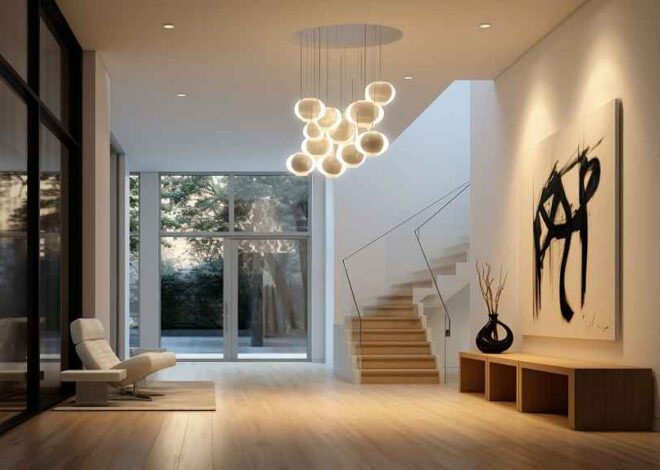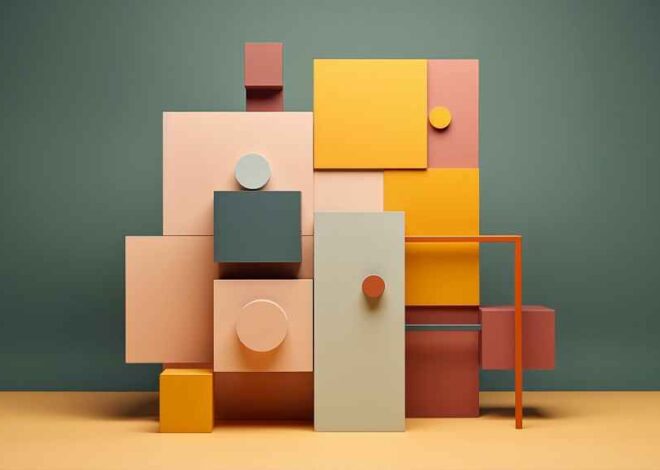
How to Design a Functional and Stylish Home Office?
A well-designed home office is critical for boosting productivity and enhancing work-life balance. With more people working remotely, creating a functional and stylish workspace at home has become a priority. This comprehensive guide provides tips and ideas for designing a home office optimized for work while still reflecting your style. Read on to learn the essential elements and design considerations to help you create a haven for work and relaxation.
Essential Elements of a Functional Home Office
A functional home office begins with getting the basics right. Careful planning and design of these essential elements will ensure your home workspace supports your productivity needs.
Space Planning
When planning out your home office, first consider the physical constraints of the space. Measure the room dimensions and outline the existing furniture layout to understand how to maximize the available area. If the space is limited, get creative with compact desks and multifunctional furniture. For example, look for desk designs with hidden storage or pieces that serve dual purposes like a storage ottoman that doubles as a seat. Arrange furniture along the walls to keep walkways open. This space planning will provide an efficient workflow.
Lighting
Proper lighting is crucial for reducing eyestrain and keeping you alert and focused while working. Natural light is ideal, so position your desk near a window if possible. Supplement with task lighting like a desk lamp to brightly illuminate your work area. Include ambient lighting such as floor lamps or wall sconces for a cozier vibe during breaks. Use dimmers and smart bulbs to adjust the lighting as needed.
Storage and Organization
Maximize every inch of your home office by incorporating storage solutions. Bookcases, cabinets, shelving, and drawers provide ample space to neatly organize files, supplies, and resources while keeping your desk clear. Use storage bins and dividers to sort items. Display books, plants, and decor on shelves rather than flat surfaces to visually open up the space. Maintaining organized storage avoids clutter and creates a calm environment.
Ergonomics and Comfort
An ergonomic workspace minimizes pain and discomfort during long work hours. Invest in an adjustable office chair that provides lumbar support and easily configurable armrests and height settings. Choose a desk with sufficient surface area for your tasks that can be raised or lowered for proper positioning. Set up your monitor so the top third aligns with your eye level to avoid neck strain. Adding ergonomic accessories like monitor risers, wrist rests, and anti-fatigue mats can further enhance comfort.
Design Tips for a Stylish Home Office
Once you’ve addressed the functional factors, it’s time to incorporate design elements that reflect your personal taste. Use these tips to create a stylish, inviting home office you’ll be excited to work in.
Color Scheme
Pick a cohesive color palette for your home office that enhances your mood and focus. Cool tones like blues and greens have calming effects while warm hues like yellows and reds energize. Neutral backgrounds with pops of color from accent walls or artwork provide balance. Select colors that inspire you and match your decor style.
Furniture Selection
The furniture shapes, textures, and silhouettes you choose will define your office style. Mid-century modern furniture in light wood tones gives an airy, retro vibe. Rich leather and mahogany pieces create a traditional, elegant look. For contemporary style, opt for sleek glass and metal desks and storage. Select multifunctional furniture that saves space while making a design statement.
Textiles and Accessories
Incorporate soft and natural textures with curtains, throw pillows, area rugs, and wall art. Choose patterns and colours that complement your overall palette. Plants instantly boost visual interest and create a welcoming environment. Display meaningful photos, art, books, and objects that reflect your personality. These handpicked touches make your home office feel curated.
Decorative Elements
Make your office uniquely yours by adding decorative accents that reflect your hobbies, interests, and style. Wall mirrors visually expand smaller spaces while adding elegance. Paint or wallpaper an accent wall for a pop of colour and texture. Floating wall shelves provide display space for decorative objects. Framed artwork and prints infuse visual inspiration. These personal flourishes turn your home office into an uplifting place you look forward to spending time in.
Additional Considerations
Keep these additional factors in mind as you design your home office space. Integrating them from the start results in a comprehensive workspace that supports all your needs.
Technology Integration
Seamlessly incorporate technology into your office design for maximum function. Consider the ideal placement for lighting, electrical outlets, and network ports during space planning. Select desks and storage with built-in cable management to keep cords organized. Choose ergonomic mounts and stands for monitors and other devices. Integrated technology allows you to work efficiently.
Acoustics and Noise Reduction
Minimize disruptive noise by placing your desk away from household commotion. Install thick curtains, wall hangings, and area rugs to absorb sound. Use phone booths or acoustic panel dividers to contain noise from calls. White noise machines and headphones drown out ambient noise for improved concentration when needed. Optimizing your office acoustics removes distractions.
Sustainability and Eco-Friendliness
Incorporate sustainable and eco-friendly practices to reduce your home office footprint. Choose furniture made from recycled materials, like wood or plastic. Install LED lights, energy-efficient electronics, and smart power strips. Use plants to purify indoor air quality. Opt for reusable supplies like refillable pens and reusable notebooks. Follow paperless workflows by scanning documents. Every sustainable choice collectively benefits the environment.
Conclusion
Creating a functional and stylish home office requires considering essential productivity elements along with personalized design touches. Follow the tips in this guide to optimize your layout, storage, lighting, comfort, colour scheme, furniture, decor, and technology integration. Planning for sustainability and acoustics also ensures your office meets all your needs. Investing thoughtfully in your home workspace results in a haven tailored to your work style and personal taste that enhances daily motivation and productivity.


